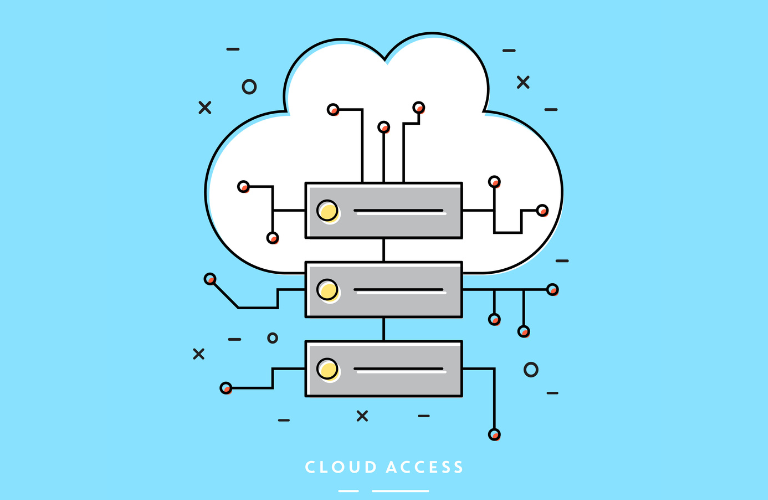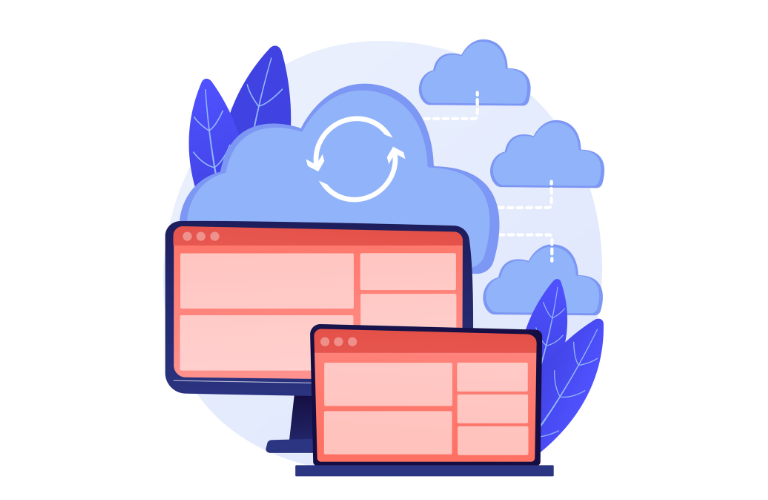Creating a PHP serverless real-time notification system is a game-changer for developers aiming to deliver instant updates with minimal infrastructure overhead. By combining PHP’s robust Laravel framework with tools like Laravel Octane, Swoole, AWS Lambda, and WebSockets, you can build an async, event-driven backend that’s both scalable and efficient.
This article walks you through deploying such a system, addressing pain points like slow performance and complex setups, while offering actionable steps for implementation. Whether you’re notifying users of new messages or live updates, this guide simplifies the process with practical examples.
Table of Contents
Why Choose a PHP Serverless Real-Time Notification System?
Traditional PHP applications often struggle with real-time demands due to their synchronous nature. A PHP serverless real-time notification system overcomes this by leveraging event-driven architecture and serverless computing. This approach reduces latency, scales automatically, and minimizes costs by running code only when triggered.
- Scalability: AWS Lambda handles traffic spikes effortlessly.
- Cost-efficiency: Pay only for compute time used.
- Speed: WebSockets enable instant, bi-directional communication.
- Simplicity: Laravel Octane with Swoole boosts PHP performance.
This setup is ideal for applications like chat systems, live dashboards, or e-commerce order updates, where users expect instant feedback.
Understanding the Core Components
To build a PHP serverless real-time notification system, you need to understand its building blocks. Laravel Octane supercharges PHP performance, Swoole enables asynchronous processing, AWS Lambda provides serverless execution, and WebSockets deliver real-time communication. Together, they create a robust backend for push notifications.
Laravel Octane and Swoole
Laravel Octane, paired with Swoole, transforms PHP into a high-performance, async runtime. Swoole’s event-driven model allows PHP to handle thousands of concurrent connections, making it perfect for real-time applications.
AWS Lambda for Serverless Execution
AWS Lambda lets you run PHP code without managing servers. By deploying Laravel in a serverless environment, you eliminate the need for constant server maintenance while ensuring scalability.
WebSockets for Real-Time Communication
WebSockets enable persistent, bi-directional connections between clients and servers. Unlike HTTP polling, WebSockets reduce latency by pushing updates instantly, ideal for a PHP serverless real-time notification system.
Setting Up the Environment
Before diving into code, ensure your environment is ready. You’ll need a Laravel project, AWS credentials, and tools like Bref for serverless PHP deployment.
- Install Laravel: composer create-project laravel/laravel notification-system
- Install Laravel Octane: composer require laravel/octane
- Install Swoole: pecl install swoole
- Set up Bref for AWS Lambda: composer require bref/bref
Configure Octane to use Swoole in config/octane.php:
'server' => env('OCTANE_SERVER', 'swoole'),Implementing the PHP Serverless Real-Time Notification System
Let’s break down the implementation into clear, actionable steps. This section provides a simple yet functional setup for a PHP serverless real-time notification system.
Step 1: Configure WebSocket Server with Laravel Octane
Laravel Octane with Swoole powers the WebSocket server. Create a WebSocket handler to manage connections and messages.
use Laravel\Octane\Facades\Octane;
Octane::route('GET', '/ws', function () {
return new \Laravel\Octane\Swoole\WebSocketHandler();
});Start the Octane server:
php artisan octane:start --server=swoole --port=8000This sets up a WebSocket server at ws://localhost:8000/ws.
Step 2: Integrate AWS Lambda with Bref
Bref simplifies deploying PHP to AWS Lambda. Create a serverless.yml file to define your Lambda function:
service: notification-system
provider:
name: aws
runtime: php-81-fpm
functions:
websocket:
handler: index.php
events:
- websocket: $connect
- websocket: $default
- websocket: $disconnectDeploy to AWS Lambda:
serverless deployThis configures Lambda to handle WebSocket events like connections and messages.
Step 3: Broadcasting Notifications
Use Laravel’s broadcasting feature to send notifications over WebSockets. Define an event in app/Events/NotificationEvent.php:
namespace App\Events;
use Illuminate\Broadcasting\Channel;
use Illuminate\Broadcasting\InteractsWithSockets;
use Illuminate\Contracts\Broadcasting\ShouldBroadcast;
class NotificationEvent implements ShouldBroadcast
{
use InteractsWithSockets;
public $message;
public function __construct($message)
{
$this->message = $message;
}
public function broadcastOn()
{
return new Channel('notifications');
}
}Trigger the event from a controller:
use App\Events\NotificationEvent;
public function sendNotification(Request $request)
{
event(new NotificationEvent($request->message));
return response()->json(['status' => 'Notification sent']);
}Step 4: Client-Side WebSocket Integration
On the client side, use JavaScript to connect to the WebSocket server and listen for notifications.
<script>
const socket = new WebSocket('ws://your-lambda-url/ws');
socket.onmessage = function(event) {
console.log('Notification:', event.data);
};
</script>This code connects to the WebSocket endpoint and logs incoming notifications.
Optimizing Performance and Scalability
To ensure your PHP serverless real-time notification system performs well under load, follow these best practices:
- Use Connection Pools: Swoole’s connection pooling reduces overhead for database queries.
- Optimize Lambda Cold Starts: Keep Lambda functions lightweight by minimizing dependencies.
- Monitor Usage: Use AWS CloudWatch to track Lambda execution times and errors.
- Cache Frequently Accessed Data: Use AWS ElastiCache to store temporary data, reducing database load.
These steps address common pain points like slow response times and high costs during traffic spikes.
Use Cases for a PHP Serverless Real-Time Notification System
This system shines in various scenarios:
- Chat Applications: Deliver instant messages to users.
- E-Commerce: Notify users of order updates or price changes.
- Live Dashboards: Push real-time analytics to admin panels.
- Social Media: Alert users to new likes, comments, or follows.
By leveraging a PHP serverless real-time notification system, you can enhance user engagement with minimal latency.
Time-Saving Shortcuts
Building a PHP serverless real-time notification system can be complex, but these shortcuts simplify the process:
- Use Laravel Echo for client-side WebSocket integration.
- Leverage AWS API Gateway for WebSocket routing to reduce Lambda configuration.
- Automate deployments with GitHub Actions or AWS CodePipeline.
- Use pre-built Bref templates for faster serverless setup.
Troubleshooting Common Issues
Even with a robust setup, issues can arise. Here’s how to tackle them:
- WebSocket Connection Failures: Ensure AWS API Gateway is correctly configured for WebSocket routes.
- High Lambda Costs: Optimize function memory and timeout settings.
- Slow Notifications: Check Swoole’s worker settings in octane.php for sufficient capacity.
Security Considerations
Security is critical for a PHP serverless real-time notification system. Implement these measures:
- Use AWS IAM roles to restrict Lambda access.
- Enable Laravel’s CSRF protection for HTTP endpoints.
- Validate WebSocket messages to prevent malicious payloads.
- Encrypt sensitive data using AWS KMS.
Scaling for the Future
As your user base grows, your PHP serverless real-time notification system can scale effortlessly. AWS Lambda automatically handles increased traffic, while Swoole’s async capabilities ensure low latency. Consider adding AWS SQS for queue-based event processing if notification volume spikes.
Conclusion
Deploying a PHP serverless real-time notification system using Laravel Octane, Swoole, AWS Lambda, and WebSockets empowers developers to create scalable, high-performance applications. By following the steps outlined, you can deliver instant notifications for chat apps, e-commerce platforms, or live dashboards. With tools like Bref and Laravel Echo, setup is streamlined, and optimizations ensure cost-efficiency. Start building today to transform your app’s user experience with real-time updates.
FAQs
1. What is a PHP serverless real-time notification system?
A PHP serverless real-time notification system is a backend setup that delivers instant updates to users using PHP, serverless architecture (like AWS Lambda), and WebSockets. It leverages tools like Laravel Octane and Swoole for asynchronous processing, ensuring scalability and low latency for applications like chat or live dashboards.
2. Why use Laravel Octane and Swoole for real-time notifications?
Laravel Octane with Swoole enhances PHP’s performance by enabling asynchronous, event-driven processing. This allows your PHP serverless real-time notification system to handle thousands of concurrent connections, making it ideal for real-time applications with minimal latency compared to traditional PHP setups.
3. How does AWS Lambda improve a PHP notification system?
AWS Lambda provides a serverless environment, meaning you don’t manage servers. It scales automatically with traffic spikes, reduces costs by charging only for compute time, and simplifies deployment. In a PHP serverless real-time notification system, Lambda ensures efficient handling of WebSocket events and notifications.
4. How do WebSockets work in a PHP serverless setup?
WebSockets enable persistent, bi-directional communication between clients and servers. In a PHP serverless real-time notification system, WebSockets push notifications instantly, unlike HTTP polling, which is slower. Laravel’s broadcasting and AWS API Gateway manage WebSocket connections for seamless updates.
5. What are the benefits of a PHP serverless real-time notification system?
- Scalability: Handles traffic spikes effortlessly with AWS Lambda.
- Cost-efficiency: Pay only for used resources.
- Low latency: WebSockets ensure instant updates.
- Simplified maintenance: Serverless eliminates server management. This makes the system perfect for real-time apps like chat or e-commerce notifications.
6. How can I set up a PHP serverless real-time notification system quickly?
Use Laravel with Octane and Swoole for the backend, Bref for AWS Lambda deployment, and Laravel Echo for client-side WebSocket integration. Key steps include:
- Install Laravel and Octane: composer require laravel/octane
- Configure Swoole and Bref for serverless.
- Set up WebSocket routes with AWS API Gateway.
- Deploy with serverless deploy. This creates a fast, scalable PHP serverless real-time notification system.
7. What are common challenges with a PHP serverless real-time notification system?
Challenges include WebSocket connection issues, Lambda cold starts, and high costs during heavy usage. Solutions:
- Optimize Lambda functions to reduce cold start times.
- Use AWS CloudWatch to monitor errors.
- Validate WebSocket messages for security. These steps ensure a reliable PHP serverless real-time notification system.




